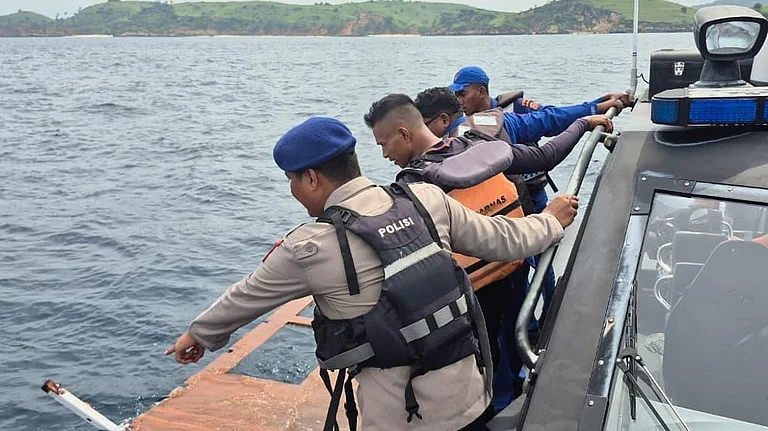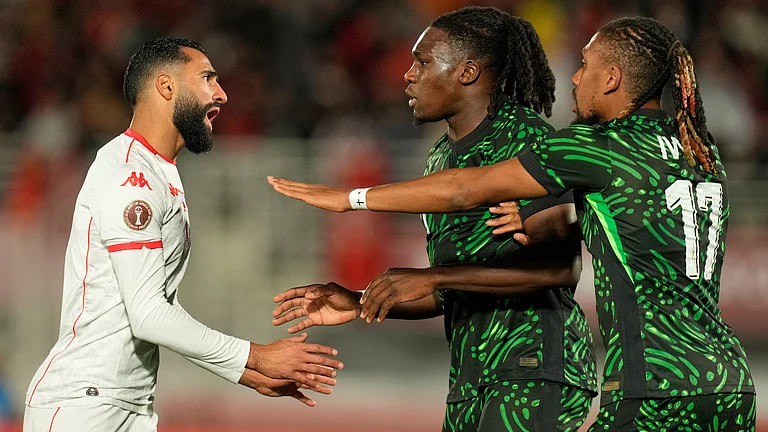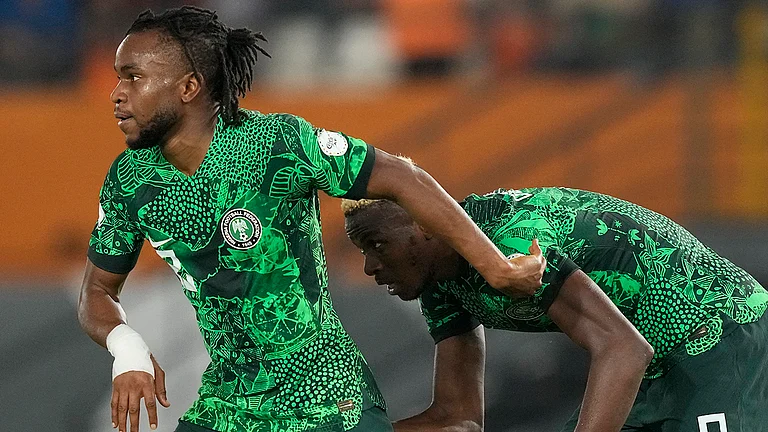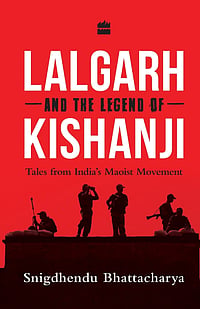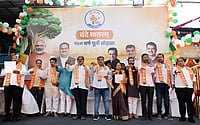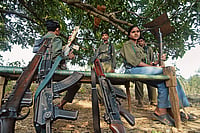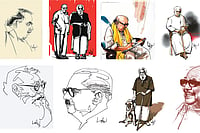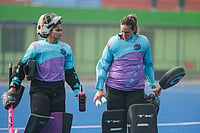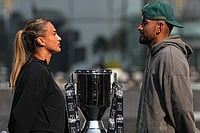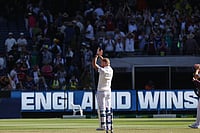Ahead of the 1977 Lok Sabha election, the repression of Emergency rule had helped a wide range of the Congress’ opponents, from opposite ideological poles, give up their separate identities and form a unified platform to dethrone Prime Minister Indira Gandhi. They gathered around freedom fighter Jayprakash ‘JP’ Narayan, the tallest living politician of the time, who served as the nucleus of the newly-launched Janata Party. He was the face of a united opposition to Gandhi’s authoritarianism.
Prior to the 1989 Lok Sabha election, again a range of opposition parties came together against Prime Minister Rajiv Gandhi, especially on corruption charges. An opposition alliance formed around dissident Congress leader Vishwanath Pratap Singh, who had launched his own party, Janata Dal, initiating what is often considered the ‘second Janata experiment.’
In 1996, a post-poll coalition of various regional parties wanted the CPI(M)’s Jyoti Basu—the Bengal chief minister for 19 years straight at that time—to take up the premiership and serve as the nucleus. His party did not allow it, though. The Left parties were not formally part of any of these coalitions but extended external support when necessary.
Ahead of the 2014 Lok Sabha election, an apparently apolitical anti-corruption movement developed against the Congress’ Manmohan Singh government with social worker Anna Hazare as the main face. Though centred in Delhi, the movement helped spread anti-Congress sentiments to different parts of the country until the BJP announced Gujarat chief minister Narendra Modi—already a polarising name—as their prime ministerial face. Modi’s anti-corruption pitch took off from where Hazare had left it.
Now, the question of the face or anchoring force of the opposition has started ringing louder as the 2024 Lok Sabha election inches forth, with opposition parties of varying ideologies and interests trying to stitch together a common platform of as many anti-BJP forces as possible.
The INDIA bloc—the Indian National Developmental Inclusive Alliance—though, is still far away from beginning any seat-sharing talks or presenting any roadmap. For the first time, in any such initiative at the national level, the Left parties are formally a part of it. But the platform itself has yet to take any shape or find a nucleus for others to gather around.
One of the major challenges before the current opposition unity initiative is that the parties that came together in 1977 and 1989 had less competitive interest between themselves than the opposition forces in today’s INDIA.

Changing Scenario and Equations
Faces and personalities have played an important role in the Indian political system, often more important than party symbols or the colour of flags. When Indira Gandhi fell out with the Congress’s old guard in 1969, effecting a split in the organisation, her opponents managed to retain the old Congress electoral symbol of a pair of bullocks carrying a yoke. The Gandhi-led faction had to contest with a new symbol. But it was her face that worked. She returned to power with a massive mandate in 1971.
But the opposition forces in Narendra Modi’s India have so far failed to find any face to gather around. In the 2019 Lok Sabha election, the Congress-led United Progressive Alliance (UPA) appeared weak from the very outset of the campaign, as major regional parties were evidently looking to corner the Congress within a broad opposition network.
The BJP targeted the opposition camp for being leaderless and visionless, mocked them saying the opposition government will have seven prime ministers designated for every day of the week, and the opposition failed to assure the voters of coming anywhere close to offering a stable government.
Post 2019, too, several unsuccessful attempts to build an opposition alliance with the Congress as a lesser force, were initiated by the likes of West Bengal chief minister Mamata Banerjee and Telangana chief minister K Chandrasekar Rao. Finally, Bihar chief minister and Congress ally Nitish Kumar prepared the ground for the Congress to take the initiative.
The INDIA bloc has so far seen warring forces like the Congress and Delhi chief minister Arvind Kejriwal’s Aam Aadmi Party (AAP) share a dais, even though Banerjee’s Trinamool Congress (TMC)’s presence has pushed her arch-rival CPI(M) to be less visible as part of the bloc.
“In India, a majority of voters will want to know who would be the next prime minister. To be able to counter the face of a strong ruling leader without any opposition face, the opposition needs to have bold policy decisions and a clear roadmap. As of now, INDIA bloc has none of these,” a Congress veteran says and adds, “But all these will change when we deal the BJP a few blows in the coming state elections.”
His hopes are based on the understanding that in 2019, the Congress was still seen as a declining force, which is why regional parties were keener on grabbing the Congress’ space than building a strong alliance. In contrast, the party is currently being seen as a force recovering lost ground— winning the Karnataka and Himachal state elections, among its major achievements.
A TMC Rajya Sabha MP, who too spoke on condition of anonymity, agrees that the five state elections would play a significant role in shaping the opposition platform.
“It is after the five state elections that all parties will have an idea of the political trends. Each force’s strength will determine their bargaining power and the alignment outcomes,” the parliamentarian said.
Lessons from the Past
What happens to the Congress’ hopes remains to be seen but India’s past experience with rainbow coalitions does not help INDIA. In 1977, when opposition forces gathered around JP, they even merged parties to form the new Janata Party.
The new party included Gandhian socialists, regional forces, the Congress (O), the right-liberal Swatantra Party, and the right-conservative Bharatiya Jana Sangh (BJS). Left parties shared daises with Janata leaders, including those from BJS backgrounds. They formally contested the election under the Bharatiya Lok Dal (BLD)’s name and symbol, as the new party could not get an electoral symbol in such a short time.
Indira Gandhi had repeatedly called the alliance “an ideological hodgepodge” but could not prevent her party’s electoral debacle.
Despite managing to topple Gandhi’s government – her party was almost routed from most parts of India, except the south – various Janata components fell out with each other and the Morarji Desai government fell in just two years. Another Janata faction-led government ruled for five months before a fresh election was called.
JP, who did not contest the 1977 election and had no intention of joining the government, became upset with the workings of his mentees and gradually disassociated himself from its affairs. The BJS was re-launched as the BJP, and the people brought Indira Gandhi back to power.
In 1989, VP Singh’s newly-launched Janada Dal led the formation of a five-party alliance called National Front. Other components were regional ruling parties, Telugu Desam, Asom Gana Parishad (AGP), and Dravida Munnetra Kazhagam (DMK) as well as the Congress (S). The parties had their own areas of influence and therefore little competitive interest between themselves at the regional scale.
“The so-called popular ‘waves’ triggered by emotive national issues, which have characterised national elections since 1971, were not apparent this time. There was no clear mandate for a person or a party,” US diplomat Walter K Anderson wrote in 1990.
When both Congress and the National Front fell short of the majority mark, both the Left and the BJP extended their ‘external support’ to Singh.
Anderson noted in his article that the fragmentation of the vote “aroused speculation about the viability of a coalition arrangement in a country accustomed to governing parties with strong majorities-and recently to a ruling party with a weak organisational structure (JD).”
Singh’s stint lasted only 11 months, which was followed by a seven-month stint of Charan Singh as the prime minister. The Congress was back in 1991.
Similar was the fate of the non-Congress, non-BJP Third Front of regional forces during the 1990s. It lasted only two years from 1996, with two prime ministers.
Many political observers believe the BJP-led National Democratic Alliance (NDA) managed to get a clear majority in the 1999 Lok Sabha election because Atal Bihari Vajpayee had managed to create the impression of himself as a reliable prime minister during his 13-month stint in 1998-99.
There is also the example of the 2004 election, when the BJP-led NDA had the face of Vajpayee but the Congress went to the election without a prime ministerial face. Referring to Congress president Sonia Gandhi’s Italian roots, the BJP was asking if India was ready for a ‘foreigner’ prime minister. The Congress scripted a return to power nevertheless, to run the country for another 10 years.
Since 1999, India has had three successive, stable coalition governments serving their full terms. In each, the anchoring party had more than one-quarter of the total Lok Sabha seats —BJP 182 in 1999, and the Congress 145 and 206 in 2004 and 2009, respectively. But in 2014 and 2019, the highest strength of an opposition party has been the Congress’ 52 in 2019.
Poor Display?
An ideal ground for electorally launching the INDIA bloc could have been the five state elections in November. But seat-sharing talks failed. In Madhya Pradesh, where the Congress is the main contender to replace the BJP’s Shivraj Singh Chauhan government, INDIA bloc members Samajwadi Party (SP), AAP and even Nitish Kumar’s JD(U) fielded their own candidates in 70, 43 and 10 seats, respectively. The AAP is contesting separately in Rajasthan and Chhattisgarh as well.
Samajwadi Party chief Akhilesh Yadav, former Uttar Pradesh chief minister, did not hide his frustration at being snubbed by the Congress in its demand for Madhya Pradesh seats. The Congress’ attitude has taught him a lesson, he said.
“Congress has not been able to play the role of the nucleus. Other parties in the INDIA bloc would like the Congress to be more accommodative, which it has not been as of now, especially if we consider the situation in Madhya Pradesh,” says Mumbai-based journalist Jyoti Punwani. She pointed out that the Congress was being difficult with respect to Delhi and Punjab and this big brotherly attitude would harm the prospects of a credible alliance. “For INDIA to take shape, the Congress has to be more democratic in its attitude towards INDIA partners,” she says.
According to columnist Udayan Bandyopadhyay, who teaches political science at Bangabasi College in Kolkata, INDIA members have missed a chance to display their unity in the five state elections and their prospects do not appear bright. “It was crucial for the INDIA bloc’s credibility that the Congress and AAP came to a seat-sharing understanding. Now busy tearing into each other, how would they convince people about their support for each other a few months later?” Bandyopadhyay asks. He thinks the failure of a Congress-Samajwadi Party understanding in Madhya Pradesh is likely to have a bearing on the two parties’ seat adjustment prospects for the Lok Sabha election in Uttar Pradesh, India’s largest state with 80 seats, as well.
“The Union government has sent the central agencies after leaders of every opposition party, including the TMC. The Congress and the Left parties are opposing such political use of central agencies. But in West Bengal, the Left and the Congress leaders are busy targeting the TMC instead of targeting the BJP for its abuse of government agencies,” Bandyopadhyay points out.
In INDIA, the TMC has sheer political competition with the Left and the Congress in West Bengal, the Left has it with the Congress in Kerala, the AAP has it with the Congress in Delhi, Punjab, Rajasthan, Gujarat and Chhattisgarh, the TMC has it with the Congress in Meghalaya, the SP has it with the Congress in Uttar Pradesh and so on.
Whether the alleged abuse of central agencies to harass the opposition leaders can bring these parties with conflicting interests closer remains to be seen.
(This appeared in the print as 'Coalition Lessons Ignored?')








